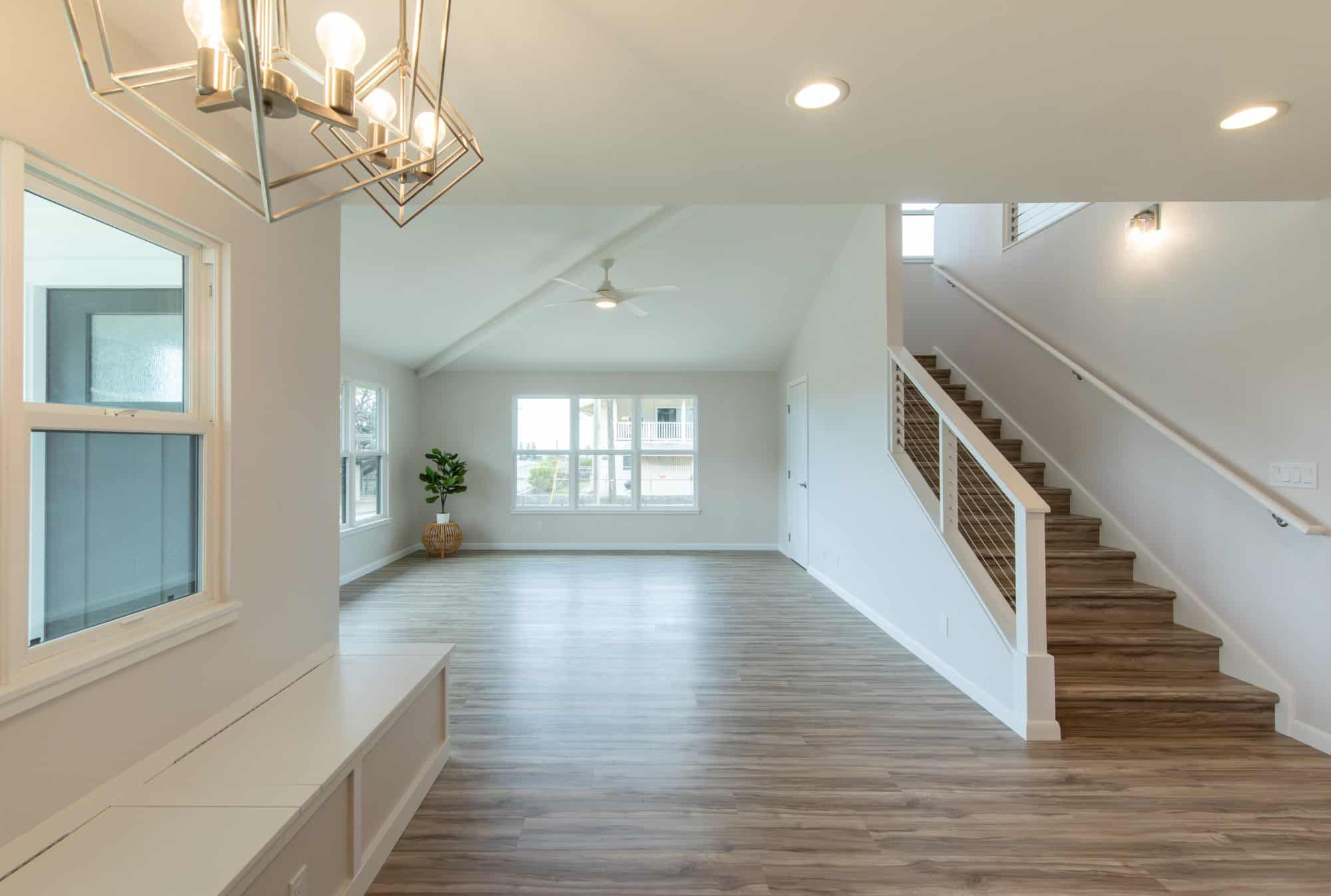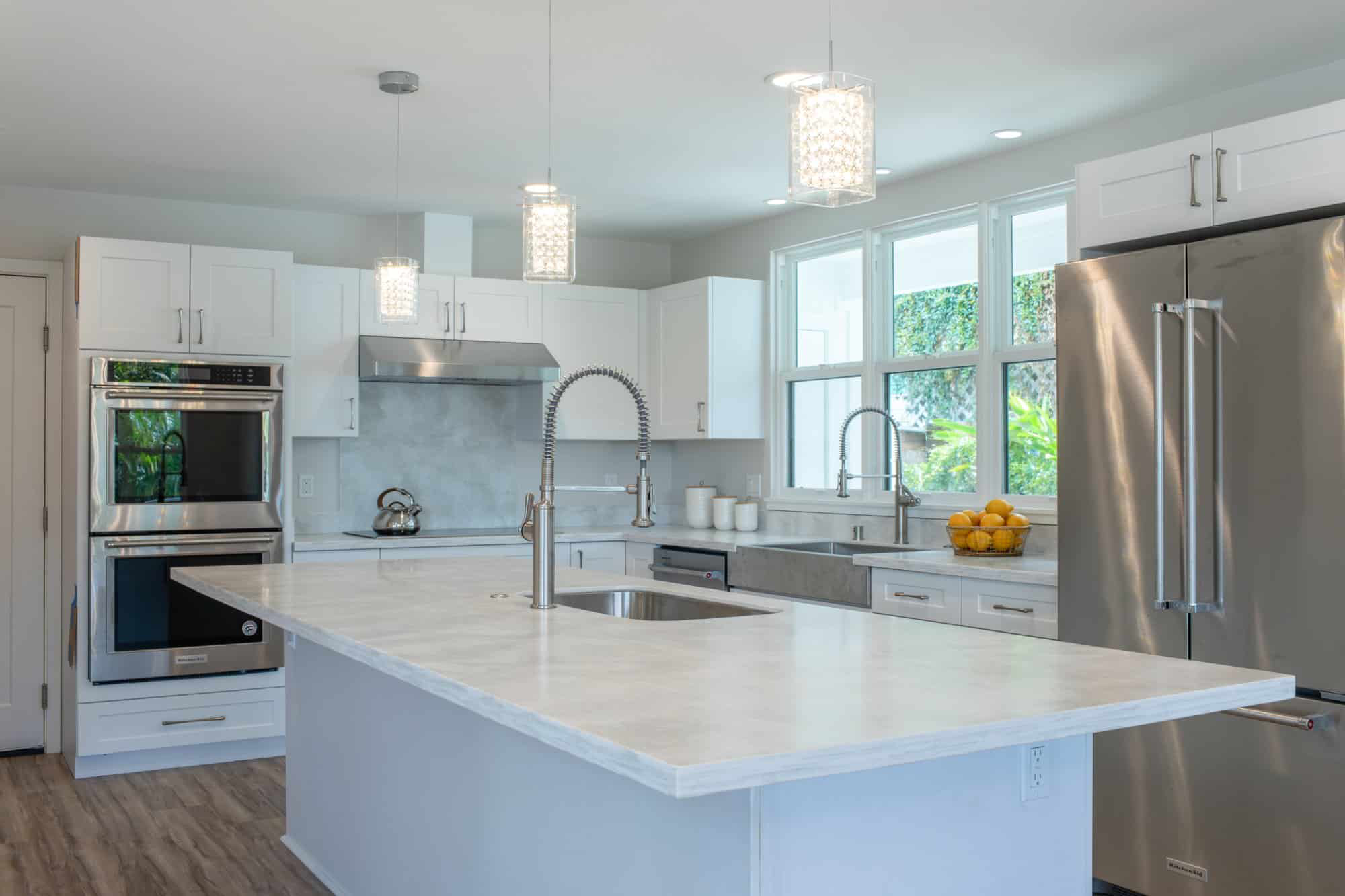Over the past three decades, the construction project delivery method known as design-build has become tremendously popular in the United States.
In a survey conducted by the Design-Build Institute of America (DBIA) and FMI Consulting, homeowner satisfaction with design-build was rated highest of all project delivery methods, with more than 75% of respondents reporting very positive experiences.
“That makes it clear: design-build has proven to be one of the most effective and successful delivery methods for construction,” says Evan Fujimoto, president of Graham Builders.
What are the reasons behind the popularity of design-build? According to Fujimoto, five major factors have contributed to its rise.
Residental design-build projects are typically handled by a single firm.
In the traditional design-bid-build model, homeowners engage architects or designers separately from the general contractor. Designs are often conceived and developed without adequate input from a builder, which often results in projects being over-designed with regard to the budget.
“With design-build, one team manages every aspect of the project, and assumes the risk and responsibility, from start to finish,” says Fujimoto, who explains that Graham Builders’ in-house team includes architectural designers, design coordinators, estimators, and project managers. Outside consultants include structural and geotechnical engineers, surveyors, and specialty contractors.
The flow of collaboration between design, engineering, and building disciplines means that the team is able to identify errors and omissions in plans and specifications early in each project, and work together to find creative solutions.
“Clients appreciate that our one-stop shop brings all parties together from the start, to improve and streamline communication,” Fujimoto adds.
All parties are stakeholders working toward a common goal.
“With design-build, every party is an active stakeholder, because that’s how they can all realize the full benefits of this method,” Fujimoto explains. “Our team manages every aspect of each project, assuming ownership and responsibility from start to finish.”
When every party is a stakeholder committed to the success of a project, cooperation and collaboration are instinctive. Essentially, each proceeds on the basis of trust and good faith toward the goal of a highly satisfied homeowner at completion
Cost estimates are realistic and more accurate.
“Our subcontractors and vendors are considered ‘trade partners,’ and they’re selected and carefully briefed early in each project to increase pricing predictability and minimize fluctuations,” Fujimoto says. “Our clients are presented with preliminary and final cost estimates when we complete their designs; there’s no bidding roulette with contractors who might have a lot of exclusions.”
Additionally, cooperative collaboration enables the team to identify cost-saving options during the design phase. “That means real value engineering, for real savings,” adds Fujimoto.
Change orders are minimized.
By its very nature, the design phase of design-build construction is methodical and thorough. During this phase, options for reducing costs and expediting delivery lead times can also be identified and considered.
“Careful design helps minimize changes during construction – which benefits the entire team,” Fujimoto says. “And close working relationships between our project managers and subcontractors helps expedite changes when they do happen.”
Homeowner stress is minimized, too.
In standard construction projects, homeowners often become stressed because there are so many variables and “unknowns.”
With design-build, you’ll have relationships with your architectural designer, estimator, project manager, and trade partners — all committed to making your project a success.
“Think of the whole team ‘paddling the canoe,’ in sync toward an agreed-upon finish line,” Fujimoto says. “It’s the ultimate win-win method for everyone involved.”



